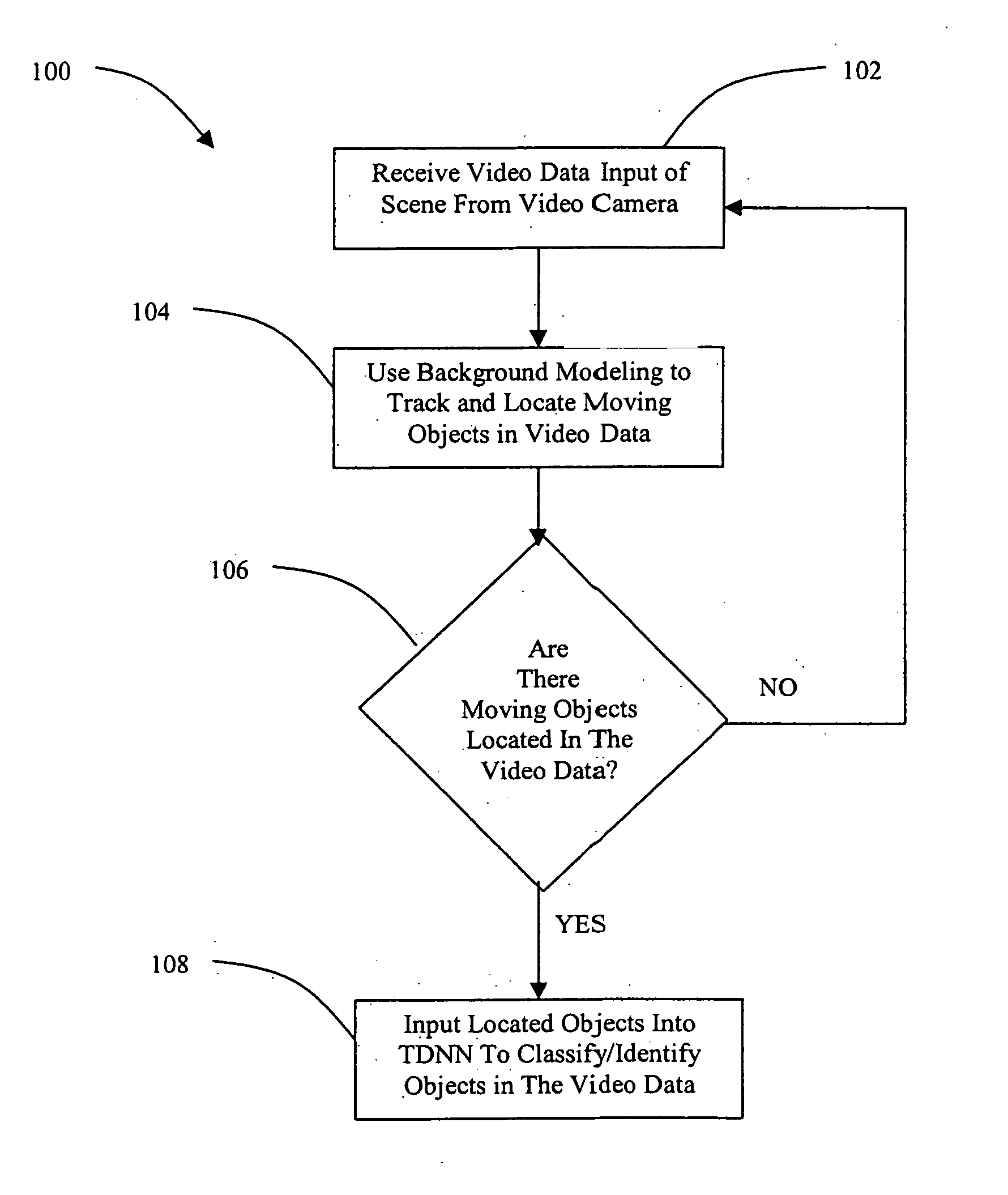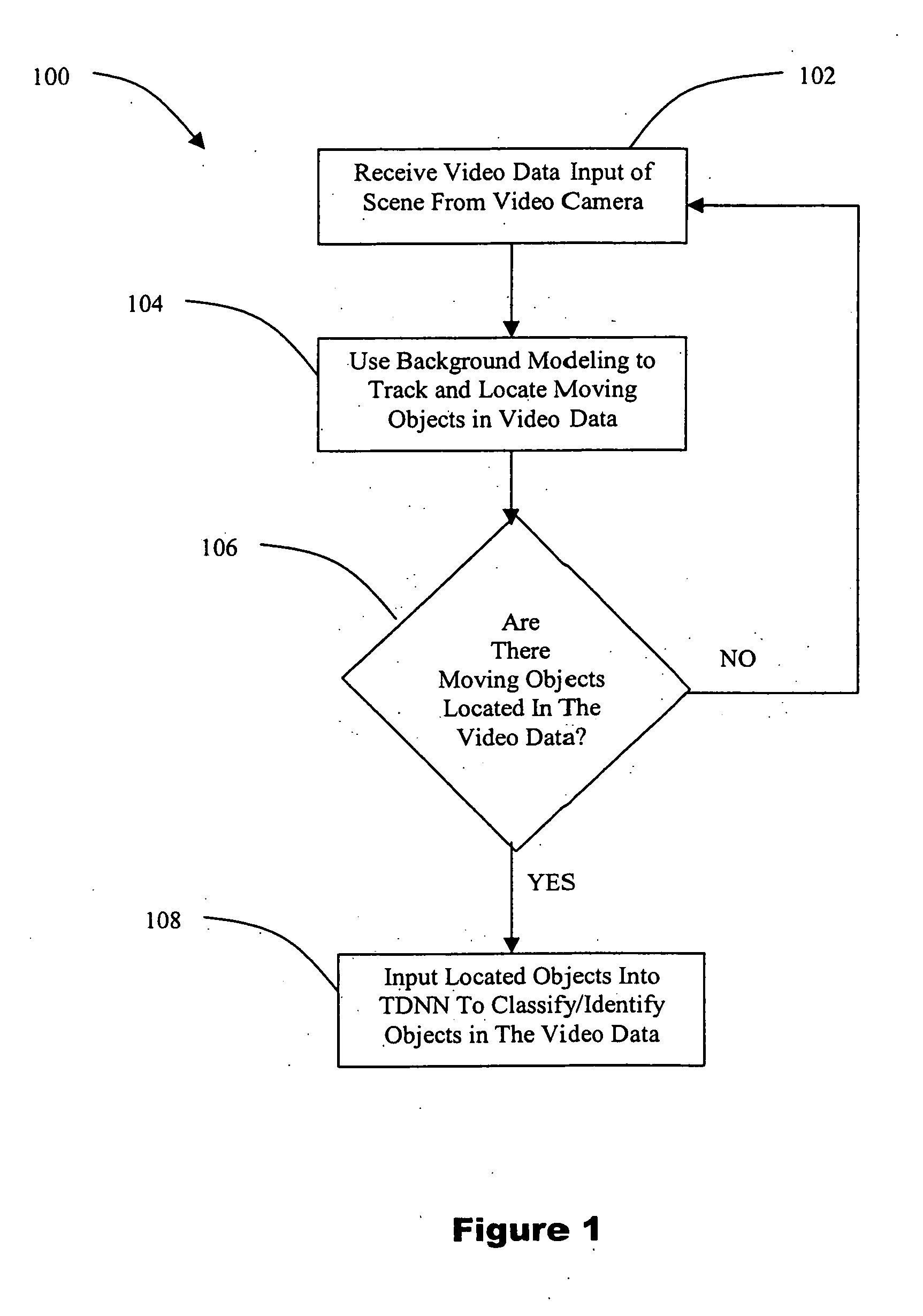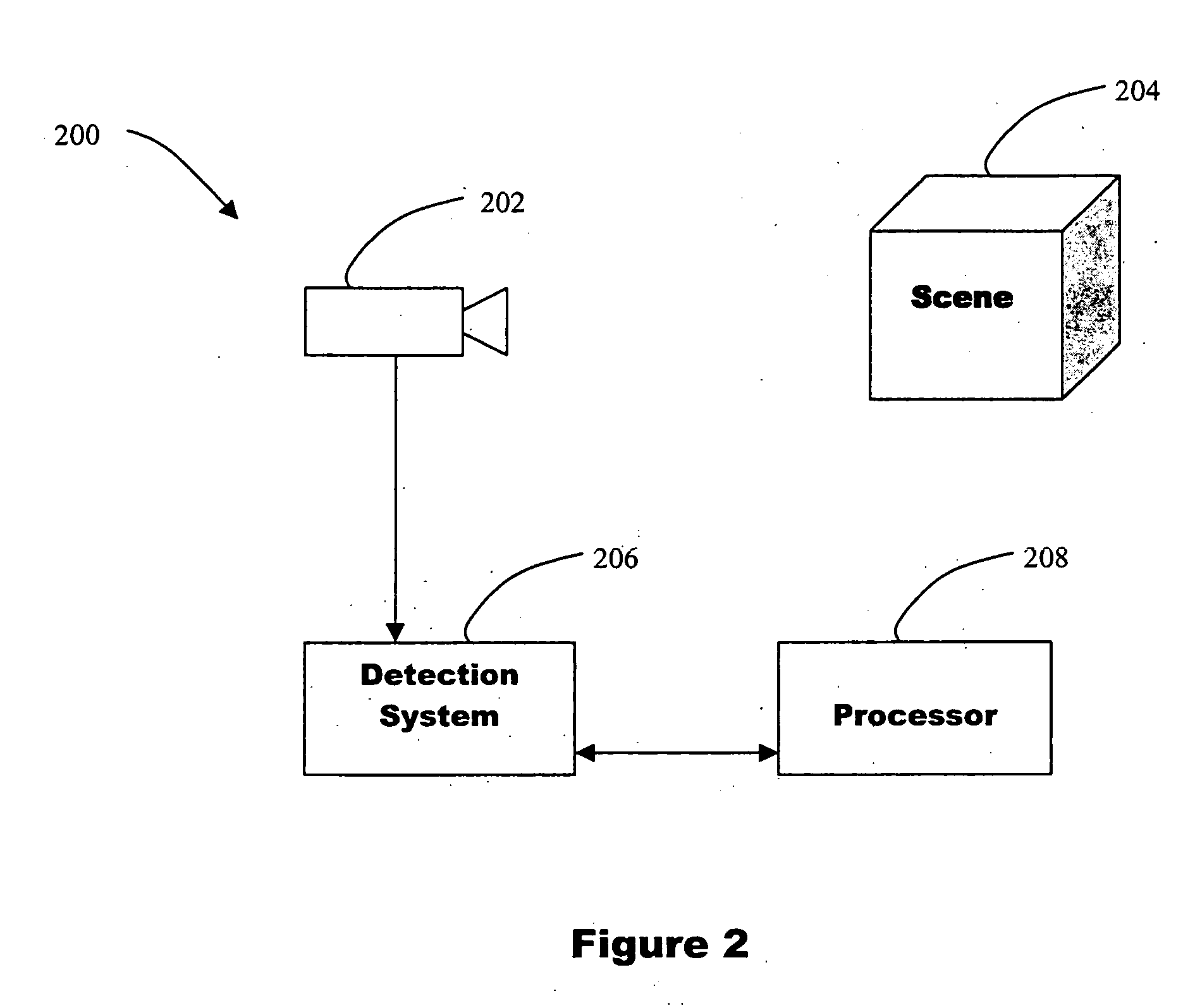Object classification via time-varying information inherent in imagery
a technology of time-varying information and imagery, applied in the field of computer vision, can solve the problems of graceful degradation, low overall performance of a classification system, and relationship between
- Summary
- Abstract
- Description
- Claims
- Application Information
AI Technical Summary
Problems solved by technology
Method used
Image
Examples
Embodiment Construction
[0021] Although this invention is applicable to numerous and various types of neural networks, it has been found particularly useful in the environment of the Elman Neural Network. Therefore, without limiting the applicability of the invention to the Elman Neural Network, the invention will be described in such environment.
[0022] As opposed to classifying objects in video imagery one frame at a time, the methods of the present invention label video sequence in its entirety. This is achieved through the use of a Time Delay Neural Network (TDNN), such as an Elman Neural Network that learns to classify by looking at past and present data and their inherent relationships to arrive at a decision. Thus, the methods of the present invention have the ability to identify / classify objects by learning on a video sequence as opposed to learning from discrete frames in the video sequence. Furthermore, instead of extracting feature measurements from the video data, as is done in the prior art di...
PUM
 Login to View More
Login to View More Abstract
Description
Claims
Application Information
 Login to View More
Login to View More - R&D
- Intellectual Property
- Life Sciences
- Materials
- Tech Scout
- Unparalleled Data Quality
- Higher Quality Content
- 60% Fewer Hallucinations
Browse by: Latest US Patents, China's latest patents, Technical Efficacy Thesaurus, Application Domain, Technology Topic, Popular Technical Reports.
© 2025 PatSnap. All rights reserved.Legal|Privacy policy|Modern Slavery Act Transparency Statement|Sitemap|About US| Contact US: help@patsnap.com



